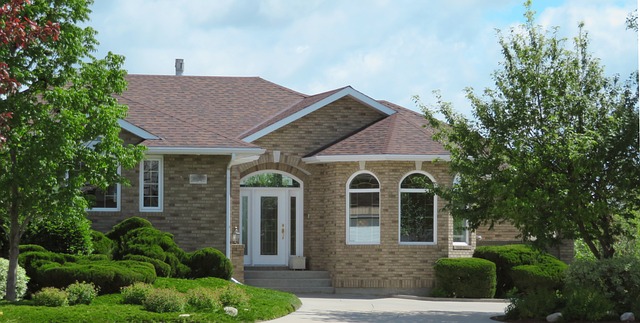Tampines' Executive Condominiums (ECs) at Hougang are leading Singapore's urban living revolution through eco-friendly design and community focus. These ECs prioritize sustainability with features like solar panels, water-efficient fixtures, and green spaces, setting new standards for urban sustainability. By blending modern convenience with ecological consciousness, they offer a model for future housing that promotes both nature enjoyment and environmental responsibility, particularly targeting the EC At Hougang market. This approach fosters community engagement in environmental stewardship, ensuring Tampines' future remains vibrant while preserving natural resources.
Discover the transformative impact of EC (Eco-Friendly Construction) developments in Tampines, a bustling community in Singapore. This article explores how green architecture and sustainable living are reshaping urban landscapes, particularly through EC projects at Hougang. From understanding eco-friendly housing to its community benefits, we delve into the key features and designs that make these developments a game-changer. Learn why sustainable practices are crucial for Tampines’ growing population and the positive prospects ahead.
- Understanding EC Developments: A Glimpse into Eco-Friendly Housing in Tampines
- The Need for Sustainable Living: Why EC Projects Matter in a Growing Community
- Key Features and Designs: Exploring Green Spaces and Efficient Architecture
- Community Impact and Future Prospects: How EC Transforms Urban Landscapes
Understanding EC Developments: A Glimpse into Eco-Friendly Housing in Tampines

In recent years, EC (Executive Condominium) developments in Tampines have been making waves for their commitment to eco-friendly living. These housing projects are not just about aesthetics; they incorporate sustainable design principles and technologies to minimize environmental impact. From solar panel installations that reduce energy consumption to water-efficient fixtures and green spaces that promote biodiversity, ECs at Hougang are setting new standards in urban sustainability.
Tampines’ EC developments prioritize community living with a focus on nature. They offer residents a chance to enjoy the outdoors while being surrounded by well-planned green areas. This blend of modern convenience and ecological consciousness is transforming the way people think about housing, making it a model for future urban development in Singapore.
The Need for Sustainable Living: Why EC Projects Matter in a Growing Community

In the heart of Singapore, communities like Tampines are experiencing rapid growth, bringing with it a pressing need for sustainable living solutions. As populations expand, ensuring environmentally conscious development becomes paramount. This is where EC (Eco-Friendly/Sustainable) projects step in as game changers, particularly in areas like Hougang. By embracing green initiatives, these developments offer more than just housing; they create vibrant, eco-conscious neighborhoods that cater to the well-being of residents and the planet.
The focus on EC at Hougang is not merely a trend but a necessary evolution. It involves integrating renewable energy sources, efficient waste management systems, and sustainable building materials. These projects encourage a reduced carbon footprint, promote biodiversity, and foster a sense of community engagement in environmental stewardship. With a growing awareness of climate change impacts, such initiatives ensure that Tampines’ future remains vibrant while preserving the region’s natural resources for generations to come.
Key Features and Designs: Exploring Green Spaces and Efficient Architecture

Tampines, a vibrant EC (Environmentally Conscious) development in Singapore, stands out for its commitment to green spaces and efficient architecture. The neighborhood boasts an intricate network of parks, gardens, and nature trails, seamlessly integrated into the urban landscape. These green spaces not only enhance aesthetic appeal but also promote biodiversity and provide residents with serene environments for relaxation and recreation.
The architectural design of EC at Hougang is equally impressive, featuring sustainable materials, energy-efficient systems, and innovative layouts. Buildings are designed to maximize natural light and ventilation, reducing the need for artificial heating and cooling. This focus on eco-friendly practices ensures that residents enjoy a comfortable living environment while minimizing their carbon footprint, reflecting the broader goals of Singapore’s green initiatives.
Community Impact and Future Prospects: How EC Transforms Urban Landscapes

The evolution of Eco-Cities (EC) in Tampines, particularly the EC at Hougang, has significantly transformed the urban landscape and community dynamics. This innovative approach to urban development focuses on creating sustainable, eco-friendly environments that promote a higher quality of life for residents. By integrating green spaces, efficient public transport systems, and energy-efficient buildings, the EC at Hougang sets a new standard for modern urban living. The impact is profound; it fosters a stronger sense of community among residents who are more connected to their surroundings, encouraged by the emphasis on shared amenities and public spaces.
Looking ahead, the prospects for EC developments in Tampines seem promising. As these eco-conscious initiatives gain traction, they inspire similar projects across the region, contributing to a greener and more sustainable urban future. The success of the EC at Hougang serves as a model for other neighborhoods, demonstrating that transforming urban landscapes can lead to vibrant, thriving communities while minimizing environmental footprints. This positive impact on both the environment and social fabric is set to shape the future of Tampines, making it an exciting case study in urban development.
EC Developments in Tampines represent a significant step towards sustainable living, showcasing innovative eco-friendly housing solutions tailored for a growing community. By integrating green spaces, efficient architecture, and a focus on community impact, these projects not only transform urban landscapes but also set a precedent for the future of Eco-conscious living in Singapore. The success of EC initiatives at Hougang underscores its potential to redefine how we live, work, and interact within our cities, paving the way for a greener and more sustainable tomorrow.
